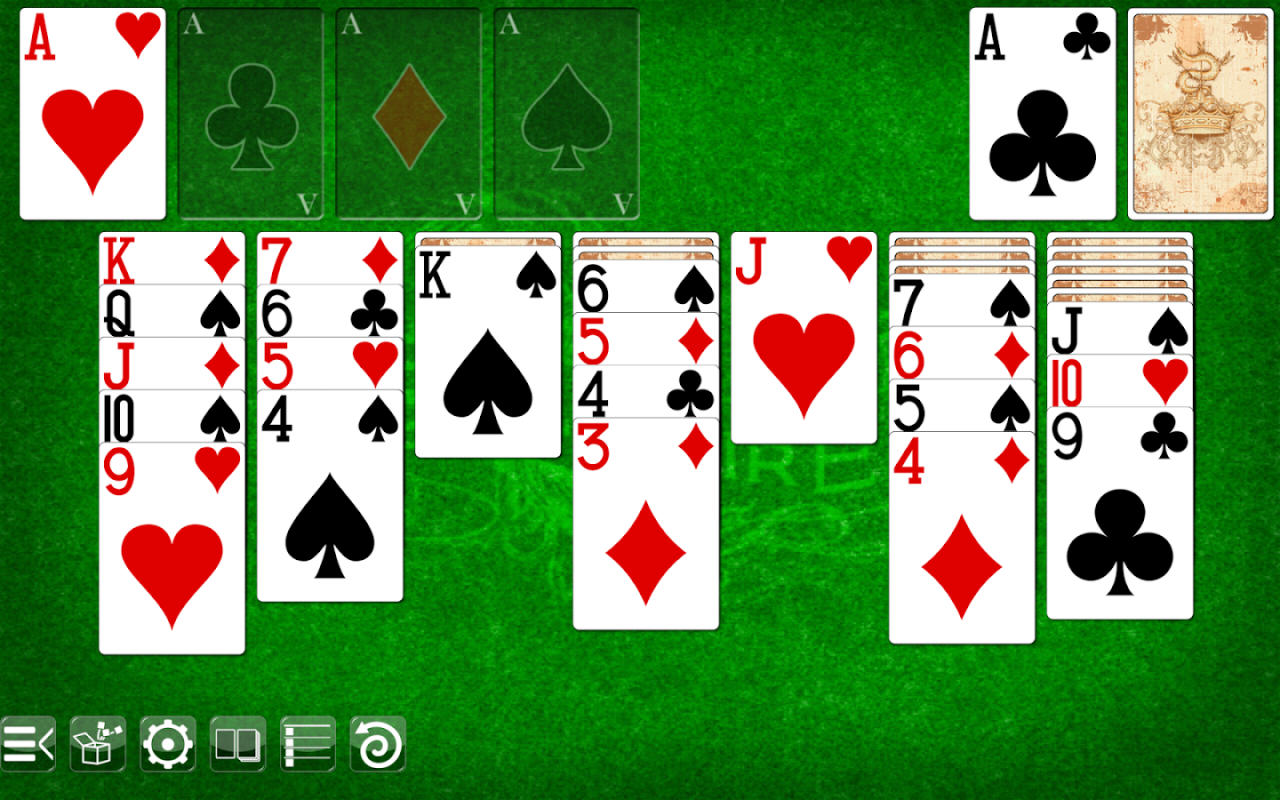Solitaire Spider takes center stage as one of the most intriguing card games, captivating players with its strategic depth and unique mechanics. From its straightforward rules to its varying difficulty levels, this game offers a delightful challenge for both novices and seasoned players alike. In this exploration, we’ll delve into the essential rules, winning strategies, and the historical significance that has shaped Solitaire Spider’s popularity over time.
Whether you’re just starting or looking to sharpen your skills, understanding the game mechanics is crucial. We’ll cover everything from setup to winning tactics, ensuring you’re well-equipped to enjoy this classic card game to the fullest.
Game Mechanics of Solitaire Spider

Solitaire Spider is a captivating card game that combines strategy and patience, making it a popular choice for players seeking a challenge. The game is played with two decks of cards and requires players to create complete sets of cards in descending order. Understanding its mechanics is crucial for mastering the game and improving your chances of winning.
The setup for Solitaire Spider involves dealing ten tableau piles, with the first four piles containing six cards each and the remaining six piles containing five cards each. The objective is to create eight complete sequences of cards, each consisting of a King through to an Ace, while managing the remaining cards strategically. Players can move cards between piles and must adhere to specific rules when doing so, which can impact gameplay significantly.
Difficulty Levels and Variations, Solitaire spider
Solitaire Spider is known for its varying difficulty levels, which can greatly affect the game experience. There are three primary difficulty levels: easy, medium, and hard, determined by the number of suits used in the game.
- Easy: Uses only one suit (e.g., all hearts). This level allows players to focus more on strategic moves without being overwhelmed by multiple suits.
- Medium: Incorporates two suits (e.g., hearts and spades). Players must pay more attention to the movement of cards as they strategize their plays.
- Hard: Involves all four suits. This level presents the most challenge, as players must consider the complexities of managing multiple card suits while completing their sequences.
The variations in difficulty invite players of all skill levels to engage with Solitaire Spider, enabling both beginners and experienced players to find a suitable challenge.
Winning Strategies in Solitaire Spider
Winning in Solitaire Spider requires a blend of strategic planning and foresight. A few effective strategies can significantly enhance the likelihood of achieving victory.
- Build Sequences: Aim to build complete sequences of cards in the tableau. Completing these sequences allows for easier management of remaining cards and opens up new moves.
- Uncover Hidden Cards: Prioritize moves that reveal face-down cards. The more accessible cards you have, the greater your options for strategic plays.
- Control Your Stock: Use the stock wisely. Only draw from the stock when necessary, as it can quickly clutter your tableau and lead to potential dead ends.
- Focus on Empty Spaces: Create empty tableau spaces where possible. These spaces serve as valuable assets for moving cards around and reorganizing your tableau.
By employing these strategies and understanding the game mechanics, players can enhance their gameplay and increase their chances of success in Solitaire Spider. You might find that implementing a combination of these strategies leads to more consistent victories.
Strategies and Tips for Winning: Solitaire Spider

Improving your gameplay in Solitaire Spider requires a combination of strategic thinking and awareness of common pitfalls. This segment will delve into effective methods that can enhance your chances of success, along with insights on mistakes to avoid. By applying these strategies, players of all levels can elevate their game and enjoy a more rewarding experience.
Effective Strategies for Gameplay
Understanding the nuances of Solitaire Spider can significantly impact your performance. Here are some key strategies that can lead to improved outcomes:
- Prioritize Completing Suit Stacks: Focus on building complete stacks in the same suit. Completing a stack not only helps in clearing the tableau but also opens up more moves.
- Utilize the Stock Wisely: Be cautious when drawing from the stockpile. Only draw when necessary, as it can limit your available moves and options.
- Move Cards Strategically: Pay attention to the sequence of card movements. Moving lower-ranked cards to expose face-down cards can create new opportunities.
- Plan Multiple Moves Ahead: Think several steps ahead, considering the potential outcomes of your moves. This foresight can help you avoid traps and dead ends.
Common Mistakes to Avoid
Many players fall into certain traps that can hinder their performance. Being aware of these common mistakes can lead to more successful games:
- Rushing Moves: Taking time to analyze the board can prevent hasty decisions that may lead to unfavorable outcomes. Always assess potential card movements before acting.
- Ignoring Face-Down Cards: Focusing too much on visible cards can obstruct your game. Always strive to uncover and utilize face-down cards whenever possible.
- Drawing Too Early: Not fully assessing the current board situation before drawing from the stock can lead to suboptimal gameplay. Use the stock only when it benefits your strategy.
Tips for Beginners
For those new to Solitaire Spider, honing your skills can be an enjoyable journey. Here are some essential tips for beginners to help you get started on the right foot:
- Familiarize Yourself with Rules: Understanding the game’s rules thoroughly is crucial for effective gameplay. Take time to learn the mechanics before diving deep into strategies.
- Practice Patience: Developing your skills takes time. Avoid becoming frustrated with losses and view each game as an opportunity to learn.
- Start with Fewer Suits: Begin your journey with games using fewer suits (such as one or two) to build confidence before tackling the full challenge of four suits.
- Observe Experienced Players: Watching others play can provide insights into effective strategies and decision-making processes that can enhance your own gameplay.
Historical and Cultural Significance

The origins of Solitaire Spider date back to the early 19th century, evolving from simple card games played in European salons to a more complex and strategic variant that we know today. This game has not only entertained countless individuals but has also carved out a niche in the broader realm of gaming culture. As we delve into its historical roots and cultural impact, we gain a deeper understanding of how Solitaire Spider fits into the landscape of card games.
Origins and Evolution
Solitaire Spider is believed to have originated from traditional solitaire games, with its unique gameplay gaining traction in the early 1900s. Its name likely comes from the spider web-like arrangement of cards that players must navigate. Over time, it has evolved from a primarily physical card game into a digital format, making it accessible to a broader audience. The transition to digital platforms has brought Solitaire Spider into living rooms around the world, allowing players to engage with the game on various devices.
Impact on Modern Gaming Culture
Solitaire Spider has made a significant impact on modern gaming culture, serving as a gateway for many into the world of card games. Its blend of strategy and simplicity appeals to a wide demographic, from casual players to seasoned strategists. The rise of mobile gaming has further popularized Solitaire Spider, with numerous apps offering the game to millions globally. This accessibility has ensured its place within the cultural zeitgeist, often recognized as a staple leisure activity during breaks or downtime.
Comparison with Other Solitaire Variations
When comparing Solitaire Spider with other solitaire variations, it becomes evident that each has its own level of popularity and unique gameplay mechanics. While games like Klondike and FreeCell have their dedicated fanbases, Spider stands out due to its dual-suit gameplay that challenges players to think strategically across multiple suits.
The following points highlight key differences between Solitaire Spider and its counterparts:
- Gameplay Complexity: Solitaire Spider often requires more strategic thinking compared to simpler versions like Klondike, where the moves are more straightforward.
- Suit Management: Players in Solitaire Spider must track multiple suits simultaneously, adding an extra layer of difficulty, unlike FreeCell, which allows more control over card placement.
- Popularity: While Klondike remains more recognizable among casual players, Solitaire Spider has cultivated a loyal following among those who enjoy its intricate gameplay.
If you’re looking to get into gaming on your PC, a great starting point is to steam download pc. This platform allows you to access a vast library of games, from indie titles to major releases. With easy installation and regular updates, you’ll find it simple to dive into your favorite games and connect with friends online.
If you’re looking to expand your game library, a great option is to explore the steam download pc feature. It allows you to access a vast selection of games right from your computer. Plus, downloading on Steam is simple and user-friendly, making it a perfect choice for casual gamers and enthusiasts alike. So, why not give it a try and see what new adventures await you?


